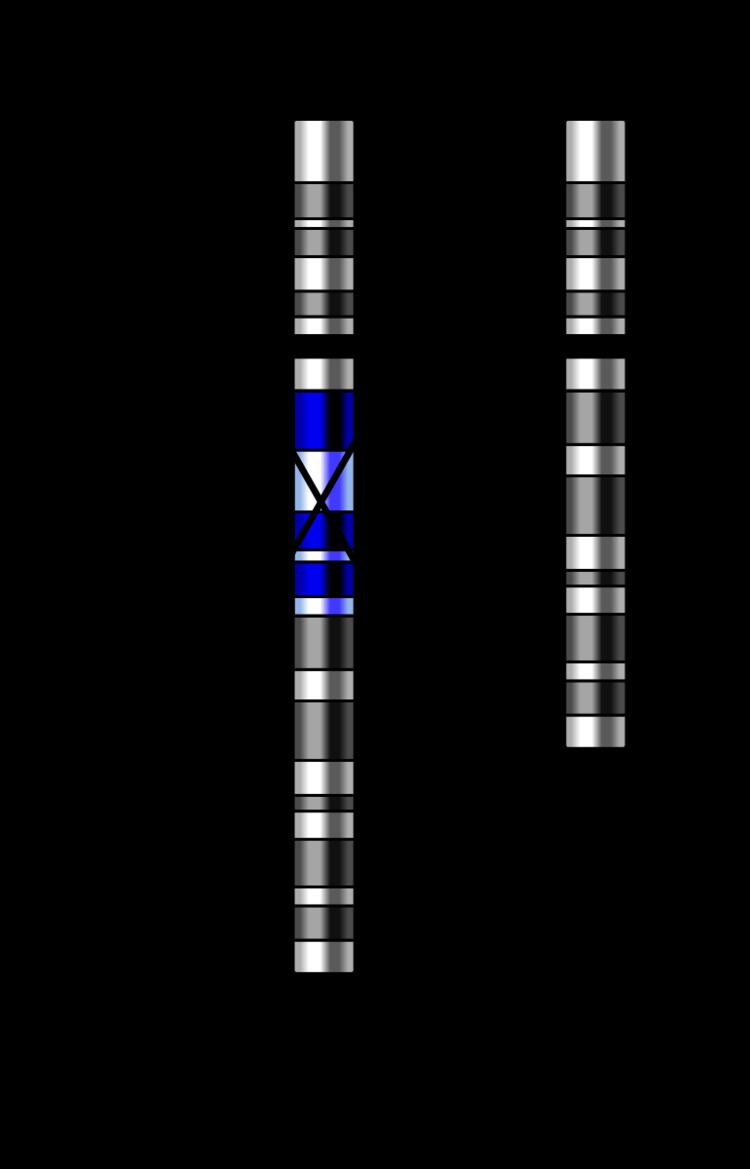 | ||
In genetics, a deletion (also called gene deletion, deficiency, or deletion mutation) (sign: Δ) is a mutation (a genetic aberration) in which a part of a chromosome or a sequence of DNA is lost during DNA replication. Any number of nucleotides can be deleted, from a single base to an entire piece of chromosome. The smallest single base deletion mutations are believed to occur by a single base flipping in the template DNA, followed by template DNA strand slippage, within the DNA polymerase active site. Deletions can be caused by errors in chromosomal crossover during meiosis, which causes several serious genetic diseases. Deletions that do not occur in multiples of three bases can cause a frameshift by changing the 3-nucleotide protein reading frame of the genetic sequence. The examples given below of types and effects of deletions are representative of eukaryotic organisms, particularly humans, but are not relevant to prokaryotic organisms such as bacteria.
Contents
Causes
Causes include the following:
For synapsis to occur between a chromosome with a large intercalary deficiency and a normal complete homolog, the unpaired region of the normal homolog must loop out of the linear structure into a deletion or compensation loop.
Types
Types of deletion include the following:
Microdeletion is usually found in children with physical abnormalities. A large amount of deletion would result in immediate abortion (miscarriage).
Effects
Small deletions are less likely to be fatal; large deletions are usually fatal — there are always variations based on which genes are lost. Some medium-sized deletions lead to recognizable human disorders, e.g. Williams syndrome.
Deletion of a number of pairs that is not evenly divisible by three will lead to a frameshift mutation, causing all of the codons occurring after the deletion to be read incorrectly during translation, producing a severely altered and potentially nonfunctional protein. In contrast, a deletion that is evenly divisible by three is called an in-frame deletion.
Deletions are responsible for an array of genetic disorders, including some cases of male infertility and two thirds of cases of Duchenne muscular dystrophy. Deletion of part of the short arm of chromosome 5 results in Cri du chat syndrome. Deletions in the SMN-encoding gene cause spinal muscular atrophy, the most common genetic cause of infant death.
Recent work suggests that some deletions of highly conserved sequences (CONDELs) may be responsible for the evolutionary differences present among closely related species. Such deletions in humans are referred to as hCONDELs may be responsible for the anatomical and behavioral differences between humans, chimpanzees and other mammals.
Detection
The introduction of molecular techniques in conjunction with classical cytogenetic methods has in recent years greatly improved the diagnostic potential for chromosomal abnormalities. In particular, microarray-comparative genomic hybridization (CGH) based on the use of BAC clones promises a sensitive strategy for the detection of DNA copy-number changes on a genome-wide scale. The resolution of detection could as high as >30,000 "bands" and the size of chromosomal deletion detected could as small as 5–20 kb in length. Other computation methods were selected to discover DNA sequencing deletion errors such as end-sequence profiling.
